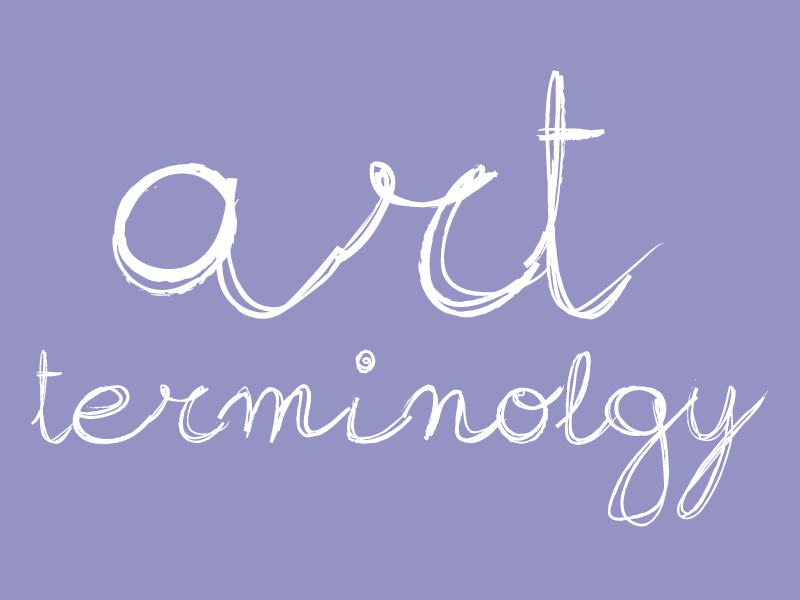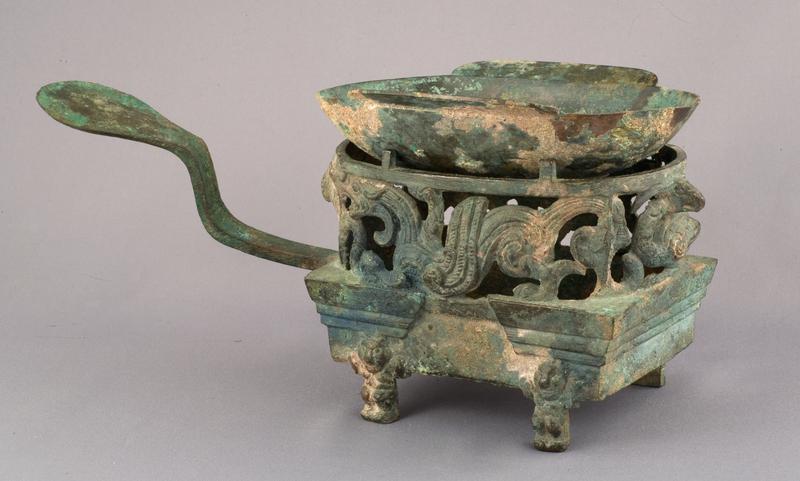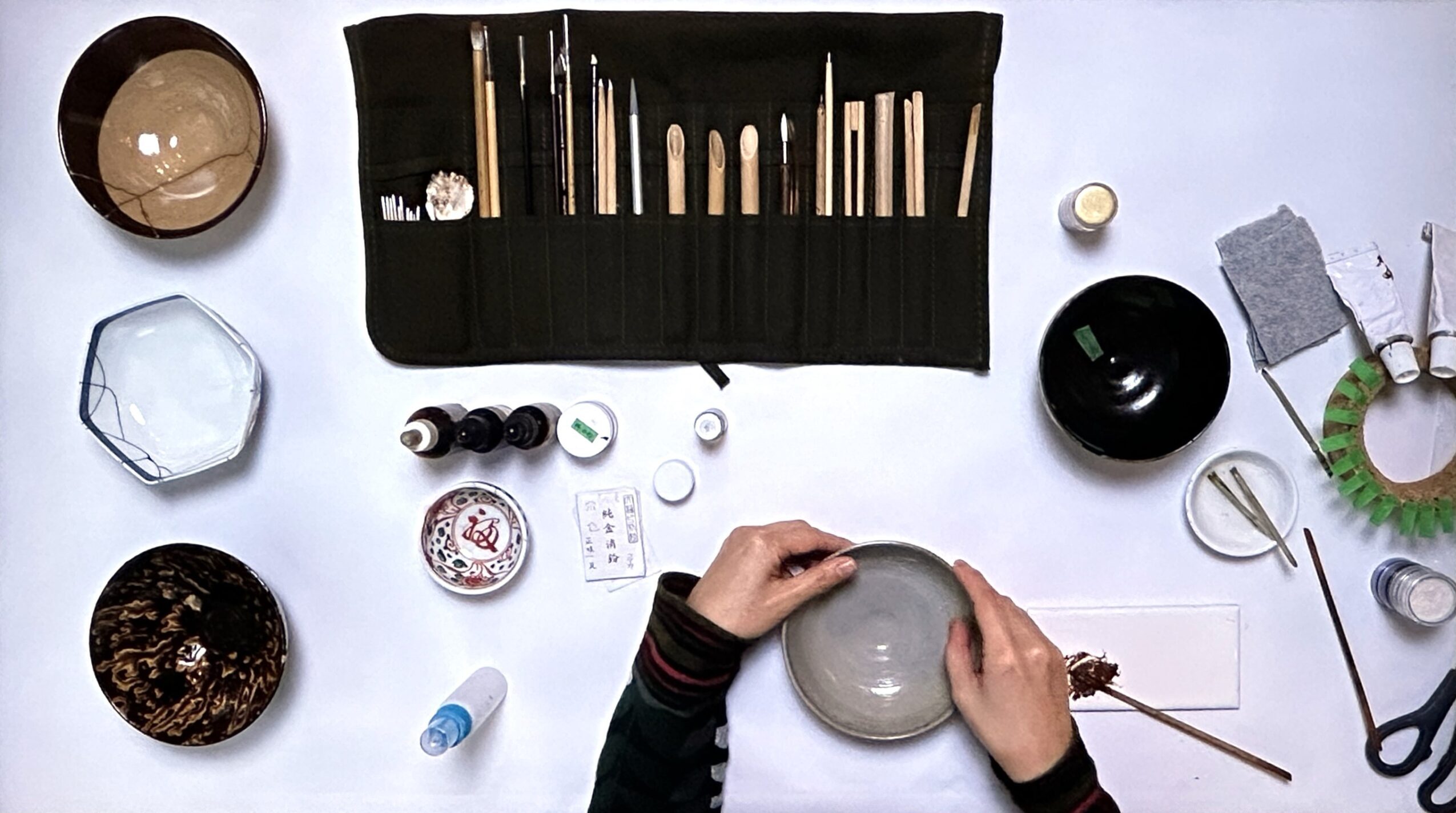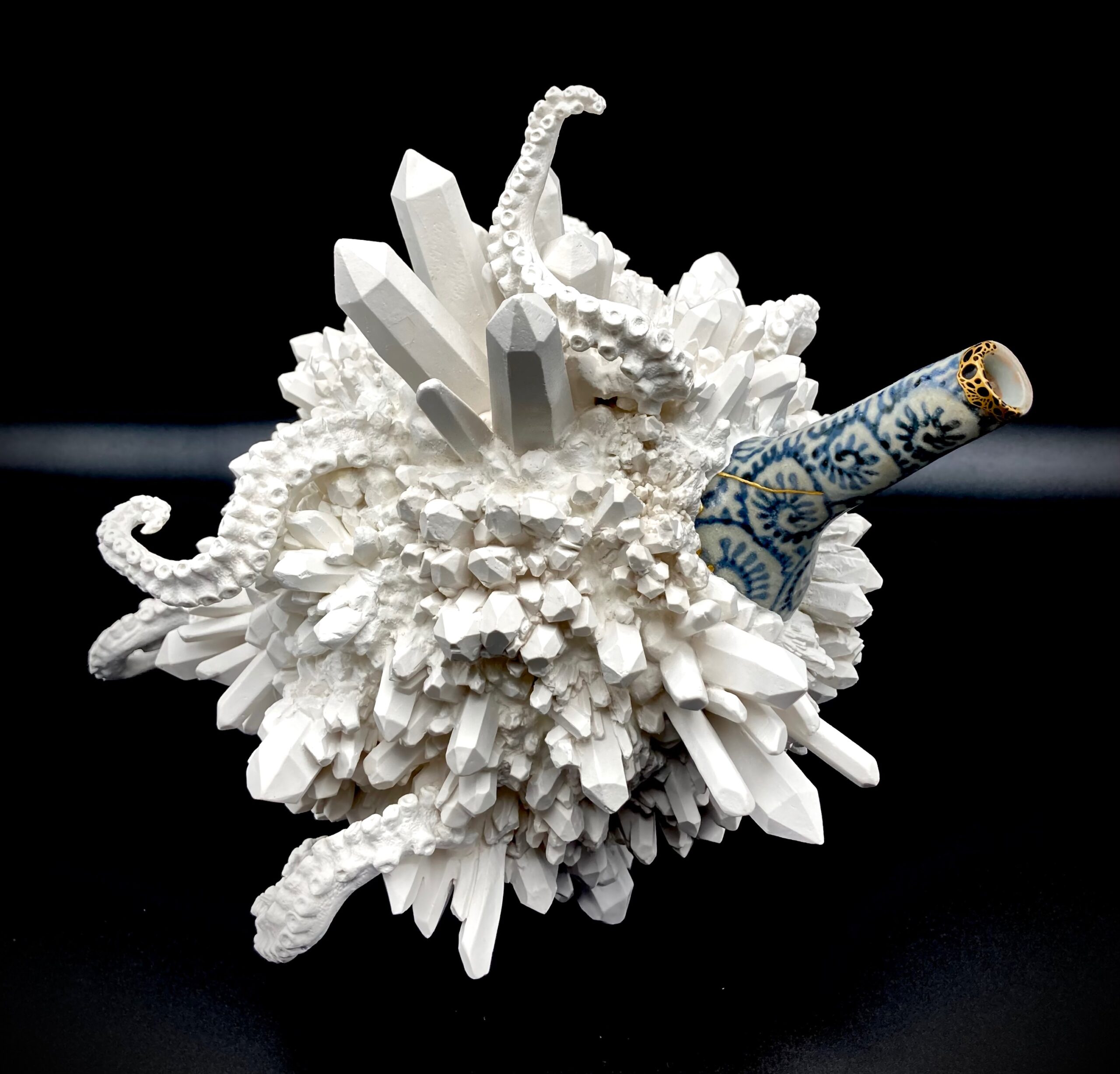Art Terms continues this quarter with a follow-up segment on Buddhist terminology. For the Buddhism related terms we had covered previously, take a look here.
1. Dharma
Derived from the Sanskrit, the key concept of dharma has different meanings in Hinduism, Sikhism, Jainism and Buddhism. In Buddhism, dharma refers to cosmic law and order, and is also applied to the teachings of Buddha. But even within Buddhism, there are variations to the status of dharma. For practicing Buddhists, dharma includes the teachings and sayings of Buddha, especially the discourses on the fundamental principles of Buddhism.
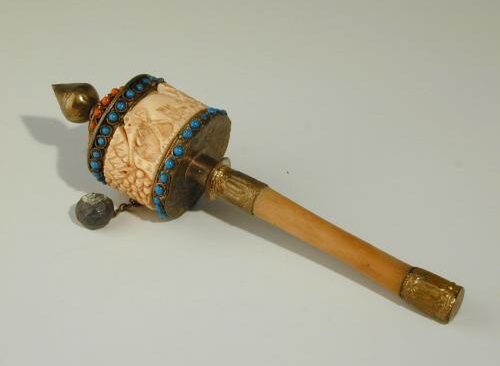
2. Prayer Wheel
A cylindrical wheel mounted on a spindle, the prayer wheel can be made in a variety of materials. At the core of the wheel are mantras written and wrapped around it. According to Tibetan Buddhist tradition, spinning the wheel will have the same meritorious effect as reciting these mantras orally. There are several types of prayer wheels, including the hand-held wheel (such as the one pictured above from the AGGV collection), wheels powered by running water, fire wheels that turn by the heat of a candle, a wind wheel, as well as stationary prayer wheels that are large fixed wheels found at monasteries where devotees can turn the wheels by sliding their hand over each one.
3. Sangha
In Buddhism, Sangha refers to the monastic community of monks and nuns. There are also separate categories for those who have attained the four stages of enlightenment, whether or not they are a part of the monastic community, referred to as “noble Sangha”.
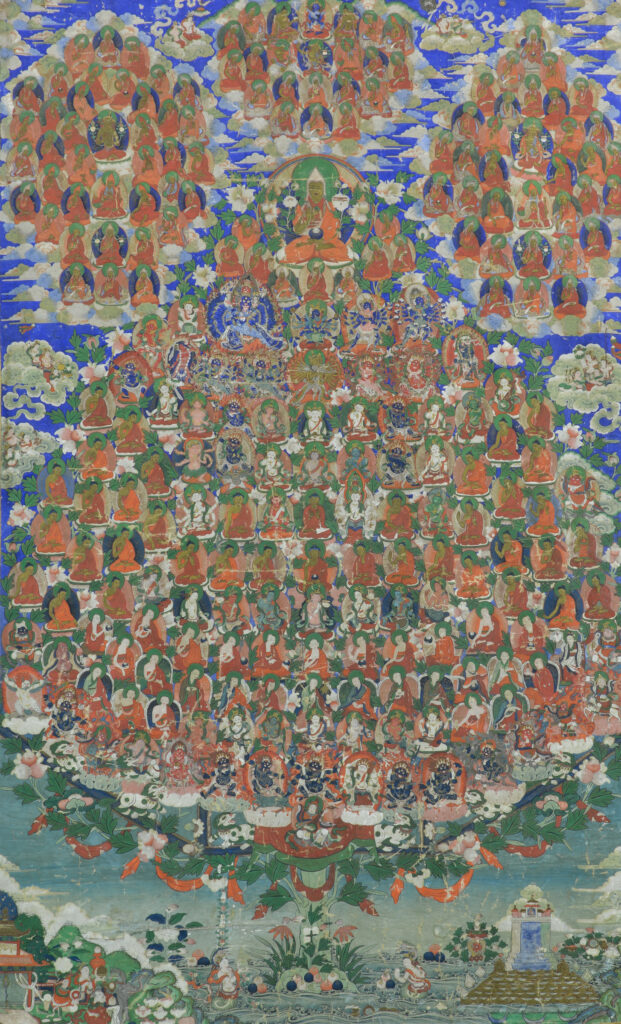
4. Thangka
A thangka is a Tibetan Buddhist painting on cotton or silk that depicts a scene or a Buddhist deity. Thangkas vary in size and are usually kept rolled up, rather than hung for display like a Western-style painting. Usually commissioned by an individual or a family, the thangka is used for meditation or instruction, at which point, the rolled-up scroll would be ceremoniously unfurled to be examined.
5. Vesak
Also known as Buddha Day, Vesak is a holiday observed by Buddhists and some Hindus in India, Sri Lanka, Nepal, Tibet, Bangladesh, Bhutan, Indonesia, Singapore, the Philippines, Thailand, Cambodia, Laos, Myanmar, Malaysia and Mongolia. In China, Japan, Korea, Taiwan and Vietnam, it is known as Buddha’s Birthday. While the actual day varies from country to country, Vesak commemorates the birth, enlightenment and death of Gautama Buddha in the Theravada tradition.
